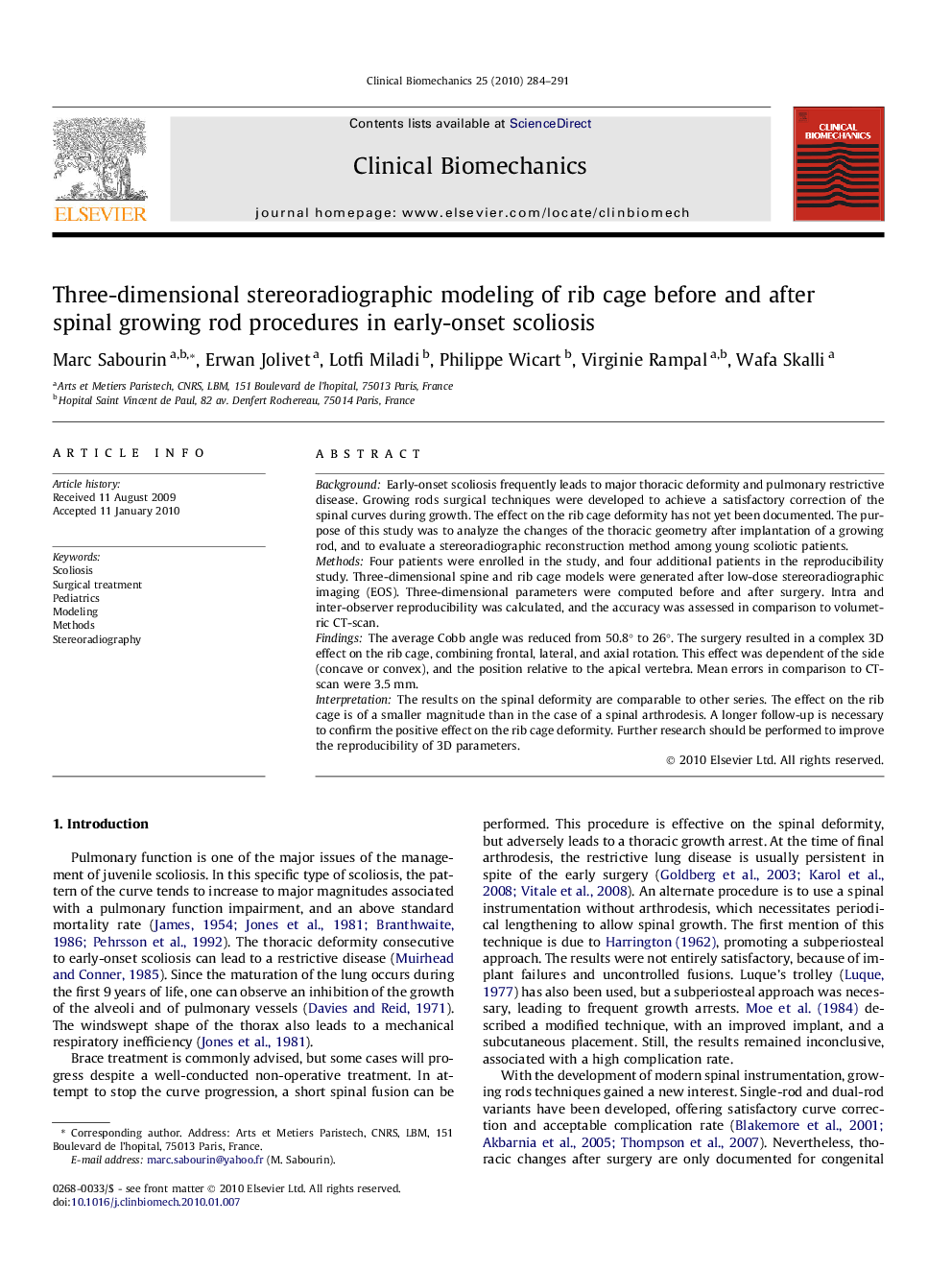| Article ID | Journal | Published Year | Pages | File Type |
|---|---|---|---|---|
| 4050611 | Clinical Biomechanics | 2010 | 8 Pages |
BackgroundEarly-onset scoliosis frequently leads to major thoracic deformity and pulmonary restrictive disease. Growing rods surgical techniques were developed to achieve a satisfactory correction of the spinal curves during growth. The effect on the rib cage deformity has not yet been documented. The purpose of this study was to analyze the changes of the thoracic geometry after implantation of a growing rod, and to evaluate a stereoradiographic reconstruction method among young scoliotic patients.MethodsFour patients were enrolled in the study, and four additional patients in the reproducibility study. Three-dimensional spine and rib cage models were generated after low-dose stereoradiographic imaging (EOS). Three-dimensional parameters were computed before and after surgery. Intra and inter-observer reproducibility was calculated, and the accuracy was assessed in comparison to volumetric CT-scan.FindingsThe average Cobb angle was reduced from 50.8° to 26°. The surgery resulted in a complex 3D effect on the rib cage, combining frontal, lateral, and axial rotation. This effect was dependent of the side (concave or convex), and the position relative to the apical vertebra. Mean errors in comparison to CT-scan were 3.5 mm.InterpretationThe results on the spinal deformity are comparable to other series. The effect on the rib cage is of a smaller magnitude than in the case of a spinal arthrodesis. A longer follow-up is necessary to confirm the positive effect on the rib cage deformity. Further research should be performed to improve the reproducibility of 3D parameters.
